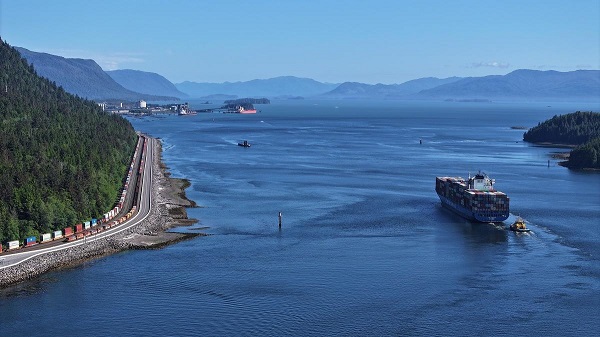Energy
Ottawa’s proposed emission cap lacks any solid scientific or economic rationale
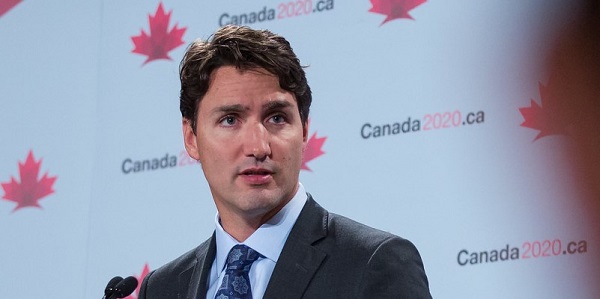
From the Fraser Institute
By Jock Finlayson and Elmira Aliakbari
Forcing down Canadian oil and gas emissions within a short time span (five to seven years) is sure to exact a heavy economic price, especially when Canada is projected to experience a long period of weak growth in inflation-adjusted incomes and GDP per person.
After two years of deliberations, the Trudeau government (specifically, the Environment and Climate Change Canada department) has unveiled the final version of Ottawa’s plan to slash greenhouse gas emissions (GHGs) from the oil and gas sector.
The draft regulations, which still must pass the House and Senate to become law, stipulate that oil and gas producers must reduce emissions by 35 per cent from 2019 levels by between 2030 and 2032. They also would establish a “cap and trade” regulatory regime for the sector. Under this system, each oil and gas facility is allocated a set number of allowances, with each allowance permitting a specific amount of annual carbon emissions. These allowances will decrease over time in line with the government’s emission targets.
If oil and gas producers exceed their allowances, they can purchase additional ones from other companies with allowances to spare. Alternatively, they could contribute to a “decarbonization” fund or, in certain cases, use “offset credits” to cover a small portion of their emissions. While cutting production is not required, lower oil and gas production volumes will be an indirect outcome if the cost of purchasing allowances or other compliance options becomes too high, making it more economical for companies to reduce production to stay within their emissions limits.
The oil and gas industry accounts for almost 31 per cent of Canada’s GHG emissions, while transportation and buildings contribute 22 and 13 per cent, respectively. However, the proposed cap applies exclusively to the oil and gas sector, exempting the remaining 69 per cent of the country’s GHG emissions. Targeting a single industry in this way is at odds with the policy approach recommended by economists including those who favour strong action to address climate change.
The oil and gas cap also undermines the Trudeau government’s repeated claims that carbon-pricing is the main lever policymakers are using to reduce GHG emissions. In its 2023 budget (page 71), the government said “Canada has taken a market-driven approach to emissions reduction. Our world-leading carbon pollution pricing system… is highly effective because it provides a clear economic signal to businesses and allows them the flexibility to find the most cost-effective way to lower their emissions.”
This assertion is vitiated by the expanding array of other measures Ottawa has adopted to reduce emissions—hefty incentives and subsidies, product standards, new regulations and mandates, toughened energy efficiency requirements, and (in the case of oil and gas) limits on emissions. Most of these non-market measures come with a significantly higher “marginal abatement cost”—that is, the additional cost to the economy of reducing emissions by one tonne—compared to the carbon price legislated by the Trudeau government.
And there are other serious problems with the proposed oil and gas emissions gap. For one, emissions have the same impact on the climate regardless of the source; there’s no compelling reason to target a single sector. As a group of Canadian economists wrote back in 2023, climate policies targeting specific industries (or regions) are likely to reduce emissions at a much higher overall cost per tonne of avoided emissions.
Second, forcing down Canadian oil and gas emissions within a short time span (five to seven years) is sure to exact a heavy economic price, especially when Canada is projected to experience a long period of weak growth in inflation-adjusted incomes and GDP per person, according to the OECD and other forecasting agencies. The cap stacks an extra regulatory cost on top of the existing carbon price charged to oil and gas producers. The cap also promises to foster complicated interactions with provincial regulatory and carbon-pricing regimes that apply to the oil and gas sector, notably Alberta’s industrial carbon-pricing system.
The Conference Board of Canada think-tank, the consulting firm Deloitte, and a study published by our organization (the Fraser Institute) have estimated the aggregate cost of the federal government’s emissions cap. All these projections reasonably assume that Canadian oil and gas producers will scale back production to meet the cap. Such production cuts will translate into many tens of billions of lost economic output, fewer high-paying jobs across the energy supply chain and in the broader Canadian economy, and a significant drop in government revenues.
Finally, it’s striking that the Trudeau government’s oil and gas emissions cap takes direct aim at what ranks as Canada’s number one export industry, which provides up to one-quarter of the country’s total exports. We can’t think of another advanced economy that has taken such a punitive stance toward its leading export sector.
In short, the Trudeau government’s proposed cap on GHG emissions from the oil and gas industry lacks any solid scientific, economic or policy rationale. And it will add yet more costs and complexity to Canada’s already shambolic, high-cost and ever-growing suite of climate policies. The cap should be scrapped, forthwith.
Authors:
Energy
B.C. Residents File Competition Bureau Complaint Against David Suzuki Foundation for Use of False Imagery in Anti-Energy Campaigns
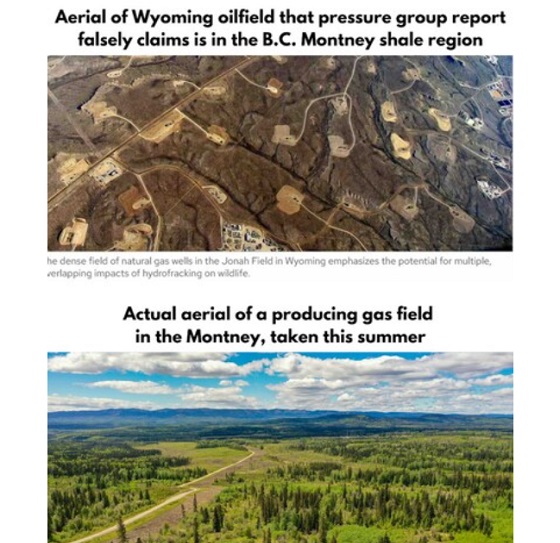
From Energy Now and The Canadian Newswire
A group of eight residents of Northeast British Columbia have filed a formal application for inquiry with Canada’s Competition Bureau, calling for an investigation into the David Suzuki Foundation’s (the Foundation) use of false and misleading imagery in its anti-energy campaigns.
The complaint alleges that the Foundation has repeatedly used a two-decade-old aerial photograph of Wyoming gas wells to falsely depict modern natural gas development in B.C.’s Montney Formation. This area produces roughly half of Canada’s natural gas.
Key Facts:
- The misleading image has been used on the Foundation’s website, social media pages, reports and donation appeals.
- The Foundation has acknowledged the image’s true source (Wyoming) in some contexts but has continued to use it to represent B.C. development.
- The residents claim this materially misleads donors and the public, violating Section 74.01(1) of the Competition Act.
- The complaint is filed under Sections 9 and 10 of the Act, asking the Bureau to investigate and impose remedies including ceasing the conduct, publishing corrective notices, and returning proceeds.
Quote from Deena Del Giusto, Spokesperson:
“This is about fairness and truth. The people of Northeast B.C. are proud of the work they do to produce energy for Canada and the world. They deserve honest debate, not scare tactics and misleading imagery used to raise millions in donations. We’re asking the Competition Bureau to hold the David Suzuki Foundation to the same standard businesses face: tell the truth.”
Background:
Natural gas development in the Montney Formation supports thousands of jobs and fuels economic activity across the region. Accurate public information is vital to informed debate, especially as many Canadians live far from production sites.
SOURCE Deena Del Giusto
Economy
Trump opens door to Iranian oil exports
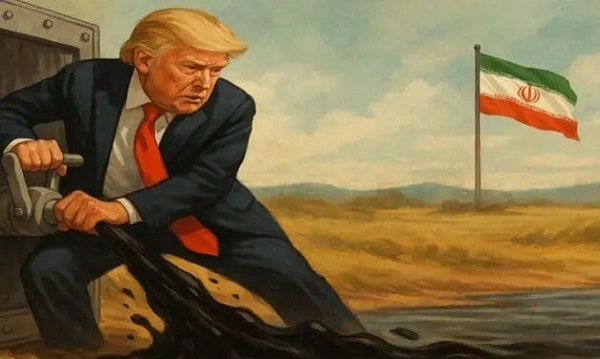
This article supplied by Troy Media.
U.S. President Donald Trump’s chaotic foreign policy is unravelling years of pressure on Iran and fuelling a surge of Iranian oil into global markets. His recent pivot to allow China to buy Iranian crude, despite previously trying to crush those exports, marks a sharp shift from strategic pressure to transactional diplomacy.
This unpredictability isn’t just confusing allies—it’s transforming global oil flows. One day, Trump vetoes an Israeli plan to assassinate Iran’s supreme leader, Ayatollah Khamenei. Days later, he calls for Iran’s unconditional surrender. After announcing a ceasefire between Iran, Israel and the United States, Trump praises both sides then lashes out at them the next day.
The biggest shock came when Trump posted on Truth Social that “China can now continue to purchase Oil from Iran. Hopefully, they will be purchasing plenty from the U.S., also.” The statement reversed the “maximum pressure” campaign he reinstated in February, which aimed to drive Iran’s oil exports to zero. The campaign reimposes sanctions on Tehran, threatening penalties on any country or company buying Iranian crude,
with the goal of crippling Iran’s economy and nuclear ambitions.
This wasn’t foreign policy—it was deal-making. Trump is brokering calm in the Middle East not for strategy, but to boost American oil sales to China. And in the process, he’s giving Iran room to move.
The effects of this shift in U.S. policy are already visible in trade data. Chinese imports of Iranian crude hit record levels in June. Ship-tracking firm Vortexa reported more than 1.8 million barrels per day imported between June 1 and 20. Kpler data, covering June 1 to 27, showed a 1.46 million bpd average, nearly 500,000 more than in May.
Much of the supply came from discounted May loadings destined for China’s independent refineries—the so-called “teapots”—stocking up ahead of peak summer demand. After hostilities broke out between Iran and Israel on June 12, Iran ramped up exports even further, increasing daily crude shipments by 44 per cent within a week.
Iran is under heavy U.S. sanctions, and its oil is typically sold at a discount, especially to China, the world’s largest oil importer. These discounted barrels undercut other exporters, including U.S. allies and global producers like Canada, reducing global prices and shifting power dynamics in the energy market.
All of this happened with full knowledge of the U.S. administration. Analysts now expect Iranian crude to continue flowing freely, as long as Trump sees strategic or economic value in it—though that position could reverse without warning.
Complicating matters is progress toward a U.S.-China trade deal. Commerce Secretary Howard Lutnick told reporters that an agreement reached in May has now been finalized. China later confirmed the understanding. Trump’s oil concession may be part of that broader détente, but it comes at the cost of any consistent pressure on Iran.
Meanwhile, despite Trump’s claims of obliterating Iran’s nuclear program, early reports suggest U.S. strikes merely delayed Tehran’s capabilities by a few months. The public posture of strength contrasts with a quieter reality: Iranian oil is once again flooding global markets.
With OPEC+ also boosting output monthly, there is no shortage of crude on the horizon. In fact, oversupply may once again define the market—and Trump’s erratic diplomacy is helping drive it.
For Canadian producers, especially in Alberta, the return of cheap Iranian oil can mean downward pressure on global prices and stiffer competition in key markets. And with global energy supply increasingly shaped by impulsive political decisions, Canada’s energy sector remains vulnerable to forces far beyond its borders.
This is the new reality: unpredictability at the top is shaping the oil market more than any cartel or conflict. And for now, Iran is winning.
Toronto-based Rashid Husain Syed is a highly regarded analyst specializing in energy and politics, particularly in the Middle East. In addition to his contributions to local and international newspapers, Rashid frequently lends his expertise as a speaker at global conferences. Organizations such as the Department of Energy in Washington and the International Energy Agency in Paris have sought his insights on global energy matters.
Troy Media empowers Canadian community news outlets by providing independent, insightful analysis and commentary. Our mission is to support local media in helping Canadians stay informed and engaged by delivering reliable content that strengthens community connections and deepens understanding across the country.
-

 Energy1 day ago
Energy1 day agoB.C. Residents File Competition Bureau Complaint Against David Suzuki Foundation for Use of False Imagery in Anti-Energy Campaigns
-

 COVID-191 day ago
COVID-191 day agoCourt compels RCMP and TD Bank to hand over records related to freezing of peaceful protestor’s bank accounts
-

 Alberta2 days ago
Alberta2 days agoAlberta uncorks new rules for liquor and cannabis
-

 Crime2 days ago
Crime2 days agoProject Sleeping Giant: Inside the Chinese Mercantile Machine Linking Beijing’s Underground Banks and the Sinaloa Cartel
-

 C2C Journal24 hours ago
C2C Journal24 hours agoCanada Desperately Needs a Baby Bump
-

 International1 day ago
International1 day agoTrump transportation secretary tells governors to remove ‘rainbow crosswalks’
-
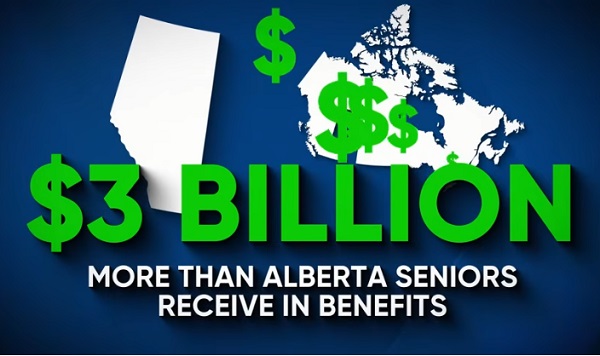
 Alberta1 day ago
Alberta1 day agoAlberta Next: Alberta Pension Plan
-
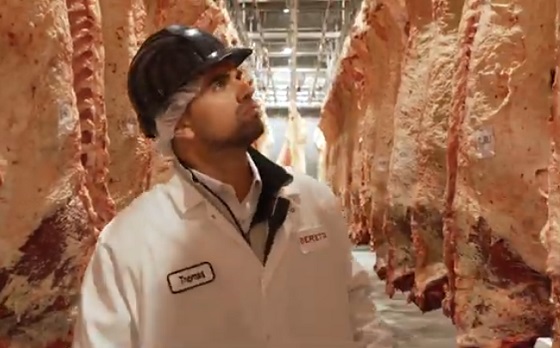
 Agriculture11 hours ago
Agriculture11 hours agoLacombe meat processor scores $1.2 million dollar provincial tax credit to help expansion







